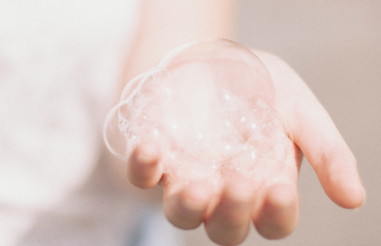If you’ve ever taken a shower, used Axe body spray, or done your laundry in the past few months, there’s a good chance you’ve used soaps. Soaps are one of the most popular products on the market and for good reason: they work. But how do soaps work? And where do soap bubbles come from? In this blog post, we will explore these questions and more, shedding light on the science behind soap production. From raw materials to soap-making processes to soap bubbles themselves, learn everything you need to know about soap production!
The Science of Soap Making
Soap bubbles are one of the most iconic and memorable aspects of soap making. In this article, we’ll take a closer look at what gives soap its bubbly character, and explore some of the science behind it all.
What’s Behind Soap Bubble Formation?
The first thing to understand about soap bubble formation is that it’s not random. Bubbles form due to specific factors, which can be broken down into three main categories: liquid chemistry, gas chemistry, and surface tension. Let’s take a closer look at each one.
Liquid Chemistry : One important factor in bubble formation is the composition of the liquid soap mixture. The two main ingredients are water and soap (or surfactant). When these ingredients mix together, they create a range of chemical reactions that produce bubbles. Some common reactions involve the formation of hydrogen gas (H2), carbon dioxide (CO2), and alcohols (C6-12). These bubbles rise due to their high pressure (due to the concentration of molecules inside them) and sudden decrease in surface area (as they burst).
: One important factor in bubble formation is the composition of the liquid soap mixture. The two main ingredients are water and soap (or surfactant). When these ingredients mix together, they create a range of chemical reactions that produce bubbles. Some common reactions involve the formation of hydrogen gas (H2), carbon dioxide (CO2), and alcohols (C6-12). These bubbles rise
Types of Soaps
There are a number of types of soap bubbles, each with its own properties that affect how well it cleanses skin. Soap films and mousses are created using liquid soap and air. Liquid soap dissolves in water to form a colloidal suspension of tiny soap molecules. When the air is added, the mixture becomes a gas, and the gas bubbles cause the film or mousse to expand.
Epsom salts are also used in some soaps to create bubbles. Epsom salts contain magnesium and sulfur which react when wet to produce magnesium sulfate and hydrogen sulfide (H2S). The H2S gas creates small bubbles when it reacts with water vapor, which gives soaps their characteristic bubbly appearance.
How Soap Bubbles Form
Soap bubbles are one of the most recognizable and popular products on the market. Whether you love popping them with your mouth or using them to clean your dishes, soap bubbles are an essential part of everyday life. So where do soap bubbles come from? In this article, we’ll take a look at the science behind soap bubbles and how they’re made.
Soap bubbles form when a liquid is mixed with air. When the air contacts the liquid droplets, it quickly creates vacuum pressure. This atmospheric pressure causes the liquid droplets to rise until they reach their collective capillary point (the point where all of the droplets join together), which is also when they start to form soap bubbles.
Soap quality also plays a role in bubble formation. The higher quality the soap, the more complex its molecules are and the more difficult it is for them to dissolve in water. This can create larger, heavier drops that don’t rise as quickly as low-quality soaps and can result in fewer bubbles forming.
What Causes Soap Bubbles to Burst
Soap bubbles are created when the alkali in soap reacts with water. The molecules of soap surround a tiny air bubble, which is then popped when the alkali in the soap reaches a high concentration. This process produces bubbles that are many times larger than those created by fragrances or other ingredients.
Soap bubbles are created when a liquid soap is diluted with water. The soap molecules bind to the water molecules, and as the concentration of soap decreases, the soap bonds so tightly to the water that they can no longer move. This causes pressure to build until the bubble bursts.











